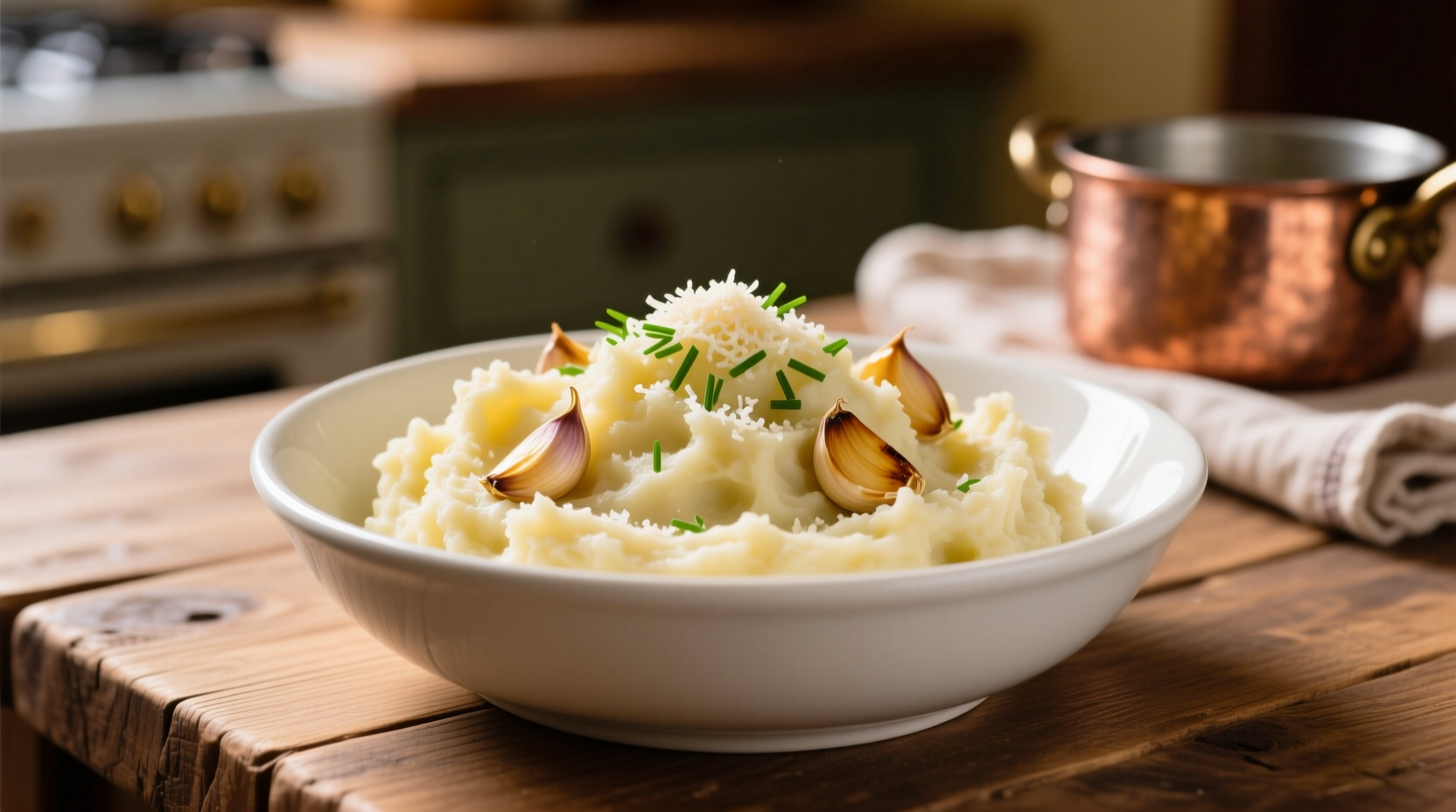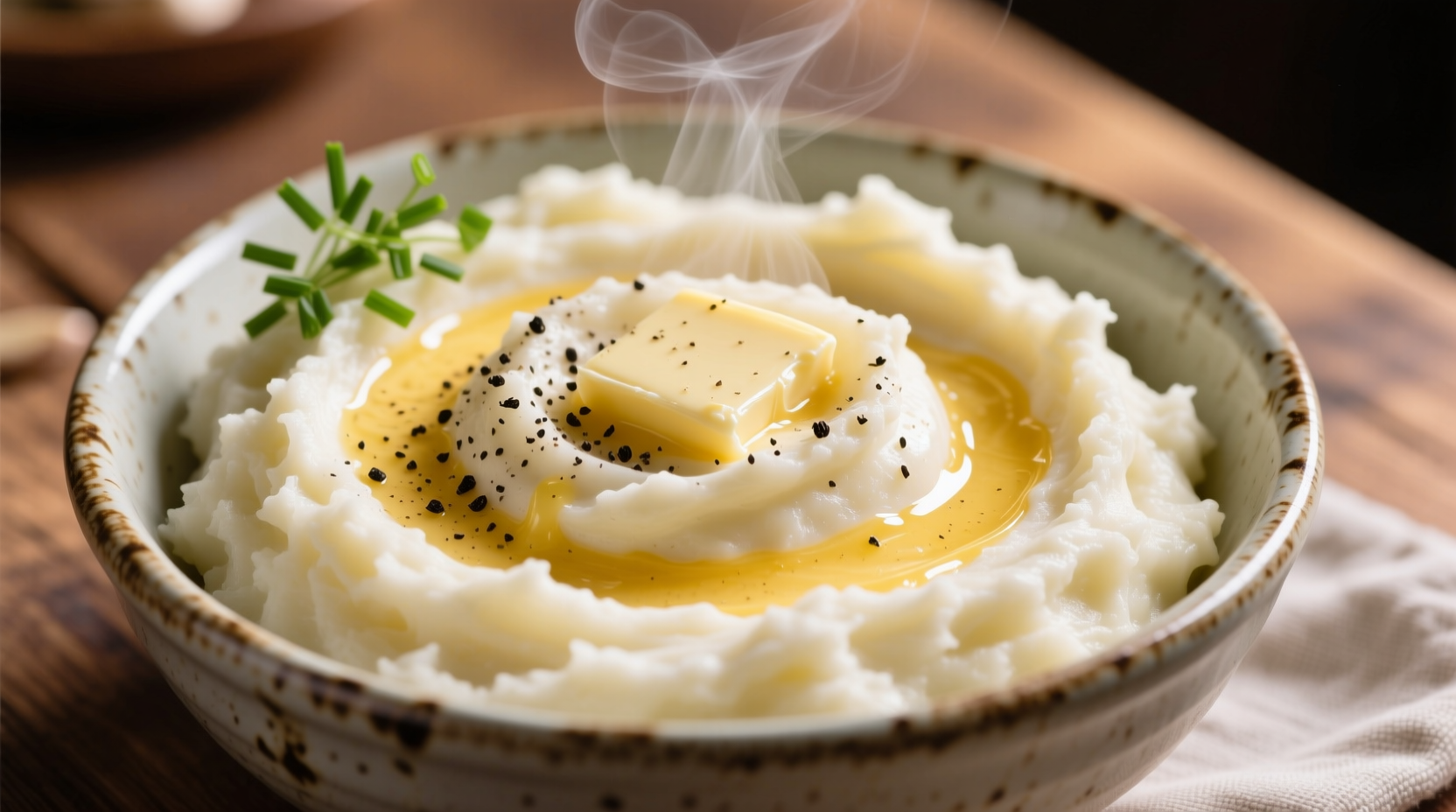The Ultimate Guide to Perfect Garlic Cream Mashed Potatoes
There's a reason garlic cream mashed potatoes remain a beloved side dish across generations. When prepared correctly, they offer the ideal balance of creamy texture and rich flavor that complements everything from roast chicken to holiday turkey. As a French-trained chef specializing in European culinary traditions, I've refined this recipe through years of testing different techniques and ingredient ratios.
Why This Recipe Works
Most home cooks struggle with mashed potatoes that turn out either gluey or watery. The key difference in this approach is understanding potato chemistry and dairy temperature management. Cold dairy causes potatoes to seize up, while overmixing releases excess starch. By following these precise methods, you'll achieve restaurant-quality results every time.
Essential Ingredients Explained
The quality of your ingredients directly impacts the final dish. Don't substitute without understanding the consequences:
| Ingredient | Why It Matters | Best Alternatives |
|---|---|---|
| Russet Potatoes | High starch content creates fluffy texture | Yukon Gold (less fluffy, more buttery) |
| Heavy Cream | 7-8% butterfat provides richness without curdling | Half-and-half (less rich) or whole milk (thinner) |
| Unsalted Butter | Control salt content; 80% fat ensures proper emulsion | Clarified butter (higher smoke point) |
| Fresh Garlic | Roasted garlic offers sweet, complex flavor | Garlic powder (1/8 tsp per clove, less nuanced) |
Equipment Checklist
Using the right tools prevents common mistakes:
- Potato ricer - Creates smooth texture without overworking starch
- Heavy-bottomed saucepan - Prevents scalding when warming cream
- Rubber spatula - Gentle folding maintains airy texture
- Roasting pan - For proper garlic caramelization
Step-by-Step Preparation
1. Roast the Garlic (15 minutes)
Preheat oven to 400°F. Cut top off garlic head to expose cloves, drizzle with 1 tsp olive oil, wrap in foil, and roast for 15-20 minutes until soft and golden. This method transforms sharp raw garlic into sweet, mellow flavor essential for authentic garlic cream mashed potatoes.
2. Prepare Potatoes (20 minutes)
Peel 3 lbs Russet potatoes and cut into uniform 1.5-inch chunks. Place in cold salted water, bring to gentle boil, and cook 15-18 minutes until fork-tender but not falling apart. Crucial step: Drain thoroughly and return to pot over low heat for 2 minutes to evaporate excess moisture.
3. Warm Dairy Components (5 minutes)
Combine 1 cup heavy cream, 1/2 cup warmed milk, and 6 tbsp butter in saucepan. Heat to 160°F (do not boil). Add roasted garlic cloves and mash into cream mixture. Warming dairy prevents temperature shock that causes gummy potatoes.
4. Mash and Incorporate (5 minutes)
Pass potatoes through ricer into large bowl. Gradually fold warm cream mixture into potatoes using rubber spatula. Season with 1 tsp salt and 1/4 tsp white pepper. Overmixing activates starch - stop when just combined.

Troubleshooting Common Issues
Even experienced cooks encounter problems. Here's how to fix them:
- Too watery: Return to low heat 2-3 minutes while stirring gently to evaporate moisture
- Too thick: Add warmed cream 1 tbsp at a time until desired consistency
- Lumpy: Use food mill instead of ricer for second attempt
- Bland flavor: Add 1/4 cup grated Parmesan or 1 tsp lemon zest for brightness
Historical Context of Mashed Potatoes
Mashed potatoes have evolved significantly since their introduction to Europe:
| Era | Preparation Method | Key Developments |
|---|---|---|
| 16th Century | Boiled and mashed with hands | Potatoes introduced to Europe from South America |
| 18th Century | Wooden mallet pounding | First recorded mashed potato recipe in 1747 (Hannah Glasse) |
| 19th Century | Cast iron ricer invention | Garlic incorporation from French provincial cooking |
| Modern Era | Scientific temperature control | Understanding of starch chemistry improves texture consistency |
When This Recipe Works Best
Garlic cream mashed potatoes excel in specific contexts but have limitations:
- Ideal for: Holiday meals, steakhouse-style dinners, comfort food menus
- Not recommended: Quick weeknight meals (requires 45 minutes), dairy-free diets without modification
- Texture considerations: Best served immediately; reheating often degrades texture
- Flavor pairing: Complements rich meats but overwhelms delicate seafood
Serving and Storage Tips
For optimal results:
- Hold in double boiler up to 1 hour with butter layer on surface
- Reheat leftovers with splash of cream and gentle whisking
- Freeze portions in airtight containers for up to 2 months
- Top with chives or crispy bacon for visual appeal
Popular Variations
Customize this base recipe for different occasions:
- Truffle version: Add 1 tsp truffle oil and 2 tbsp grated Pecorino Romano
- Herb-infused: Steep cream with rosemary and thyme before mixing
- Dairy-free: Substitute coconut cream and olive oil (adjust seasoning)
- Extra-garlicky: Add 1/4 cup caramelized onions with roasted garlic











 浙公网安备
33010002000092号
浙公网安备
33010002000092号 浙B2-20120091-4
浙B2-20120091-4